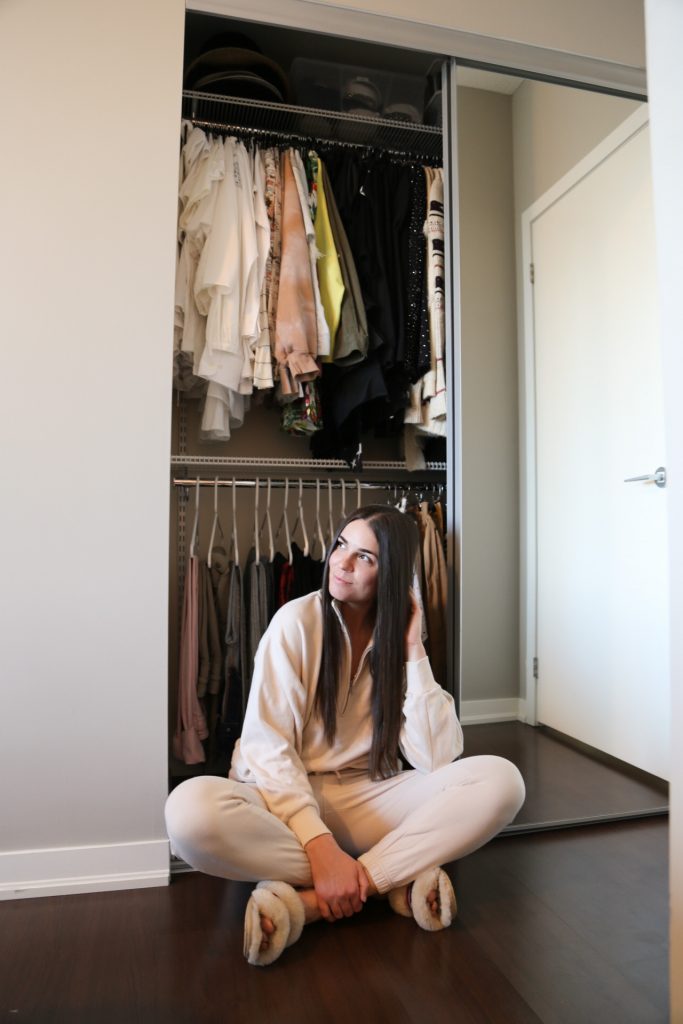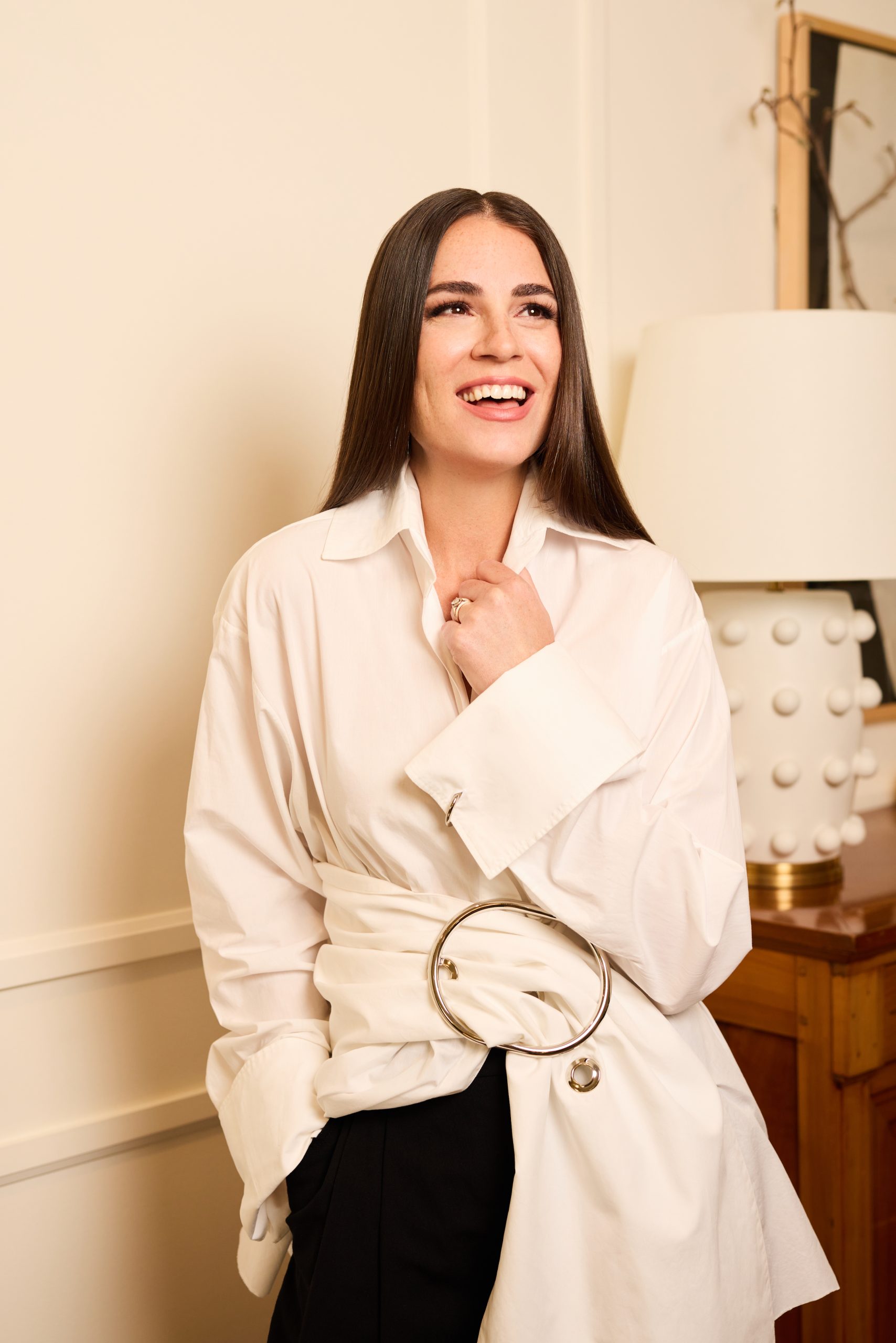Closet Organizing Hacks
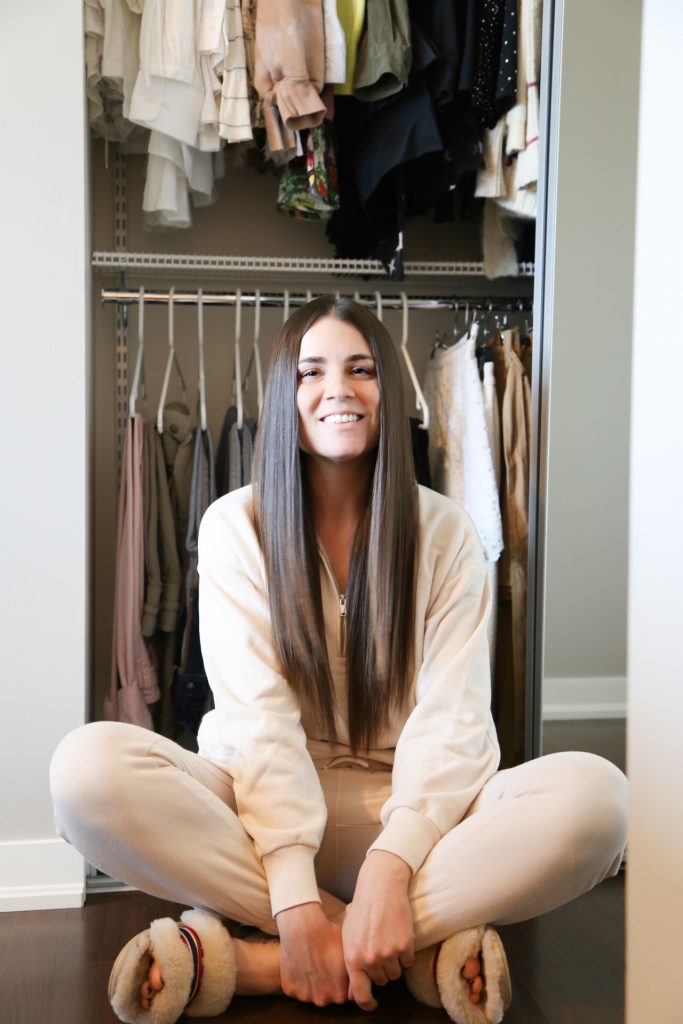
With social distancing as our ‘new normal’ I was trying to think of content that could help my readers, and with spring just around the corner, I figured a closet clean-up could be just the thing!
This is a service I’ve offered for a decade (since starting my business) and is still something I offer when I can fit it into my schedule. And interesting enough, I’ve been doing a lot of closet organizing and wardrobing for clients lately and figured, now that I have the time, why not do a little refresher of my own closets!
Here are some top tips on how to best organize your wardrobe whether you live in a condo space like me or any other space!
Hanging Toppers:
When organizing your hanging clothing, it’s always best to separate it by category, lightest to darkest, sleeveless to long sleeve.
I like to start with basic tops and blouses.
Because I organize by colour, I usually start with white, building it out using this order:
Tanks to short sleeve, then to long sleeve moving onto the next colour palette starting over again – tanks to short sleeve to long sleeve, until I finish on black.
Then I’ll move onto the next clothing category. In my closet, I move to sweaters, (again lightest to darkest) and finish on jackets and blazers.
Hangers:
Different hangers work for different people. I personally love velvet hangers (I bought mine on Amazon), especially in small closet spaces as they are so thin you’re able to double what you can fit on the rod. I also use plastic hangers for heavier items like hoodies, blazers and jackets – it will help support the shoulders of the garments over time. Wooden hangers will also do the trick, but can be bulky so I wouldn’t suggest them for condo closets.
If you have many lighter knit sweaters like cashmere I would also recommend fabric hangers.
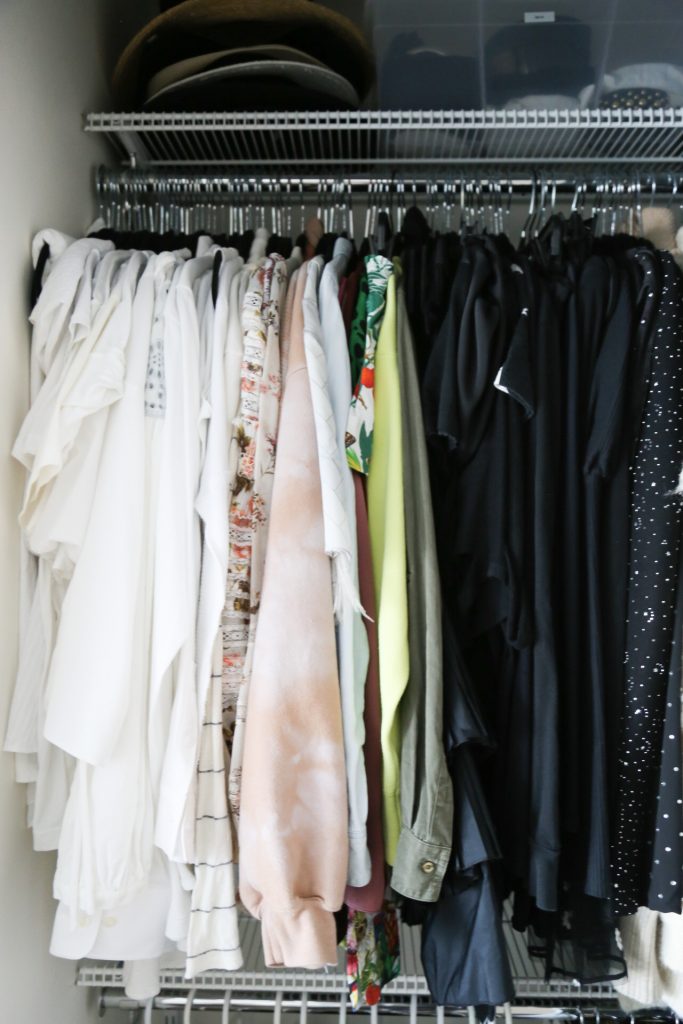
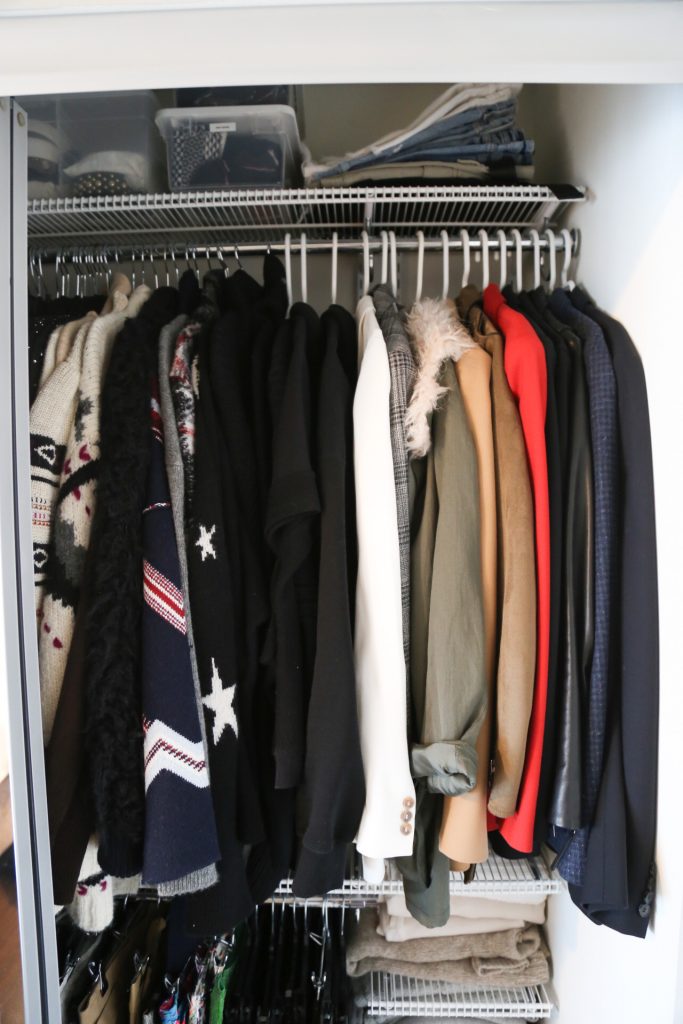
Hanging Bottoms:
When it comes to bottoms, it’s a similar concept – separating them by category, lightest to darkest. I start with my denim, leather and other more casual pants, because those are the bottoms I use on a regular basis.
Then I move onto the items I use less – my dressier shorts and skirts (again, lightest to darkest).

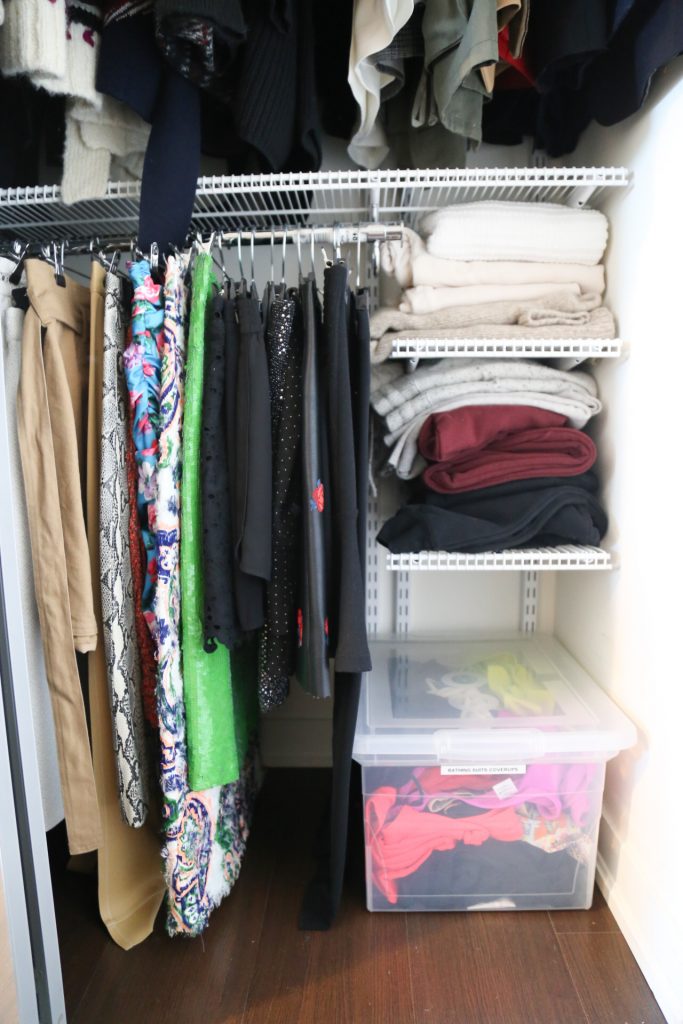
To Fold or Not to Fold:
Any fragile knits or thick heavy fabrics should be folded. I also chose to fold my sweat suits as well because I find them quite bulky to hang when my hanging space is a premium.
Again, I use the method of folding the items by category (cotton sweat suits together and my fragile knits together, lightest to darkest).

Storing Smaller Items in Tiny Spaces:
When it comes to small closet space, it’s also really helpful to use clear bins in varying sizes to hold your accessories and other smaller items that don’t fit into drawers. I even go the extra mile and label my bins (although this is not necessary, I’m just type A and love a good label maker!).
My current bins carry my swimsuits and cover-ups, heavier and thicker knit socks that are for skiing, cottage weekends and lounging, my tights and belts.
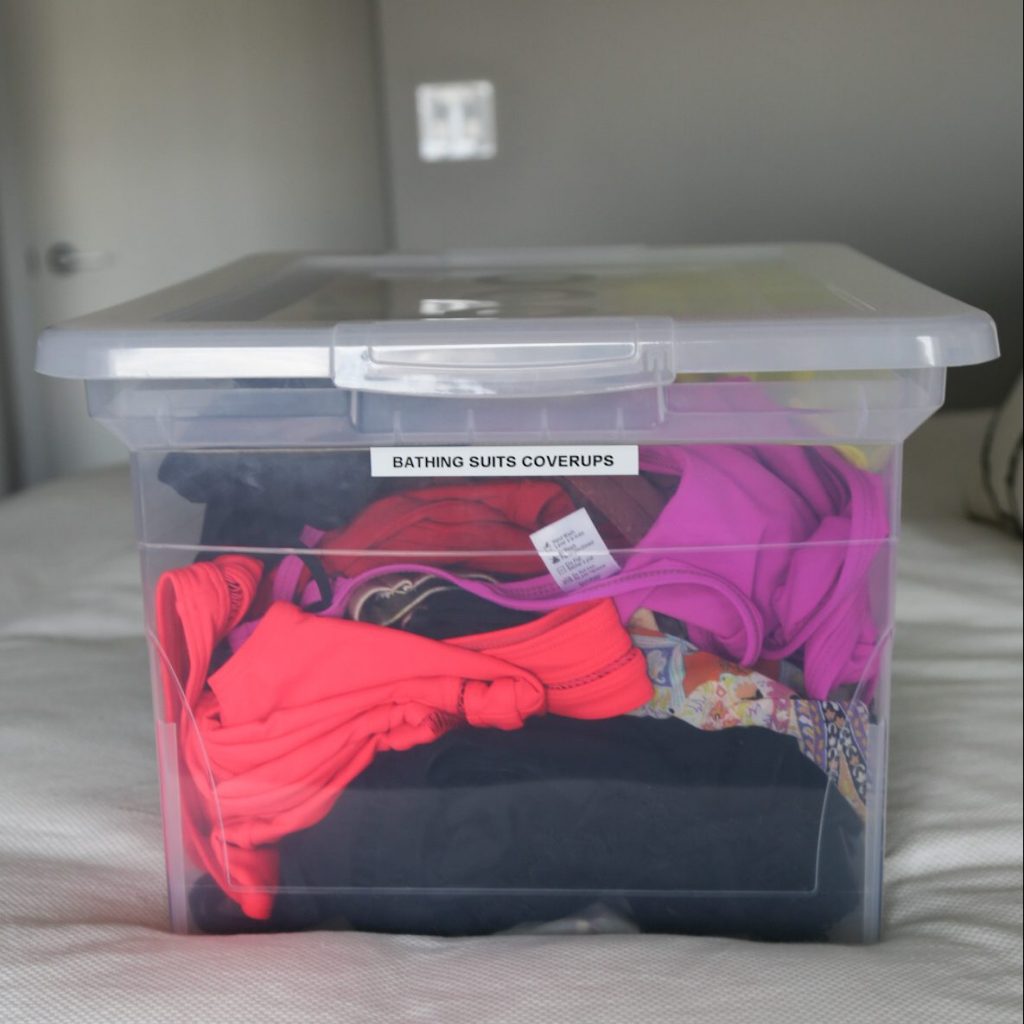


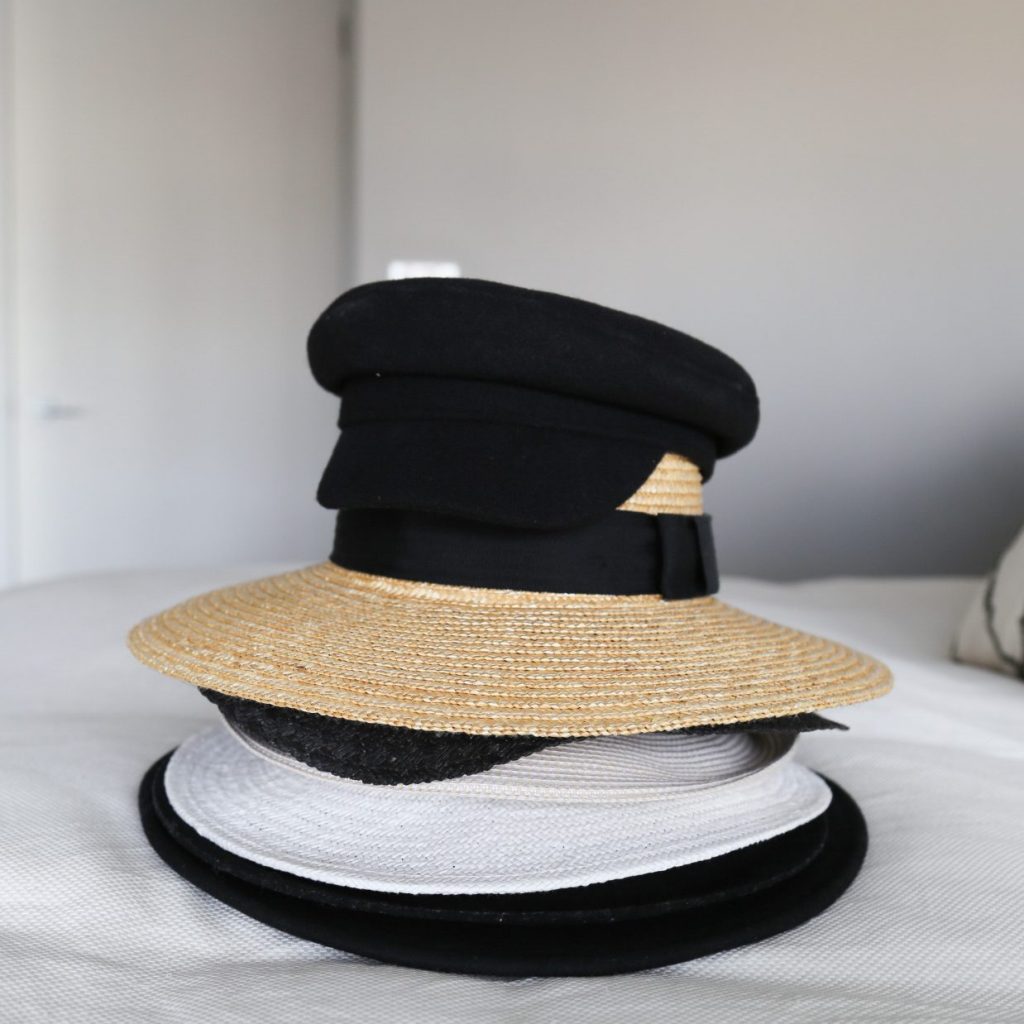
I also stack my hats to keep them in good shape, and to save space.
And because I’m renting and have to use the space I have to the best of my ability, I put all of these items where they best fit, without causing clutter. The top of my closet on the existing rack, and under the wire racks where my folded sweaters live.
The last space I use is for my summer jean shorts – again up on top because I only use them a few months a year, but like every other space, I organize it lightest to darkest.
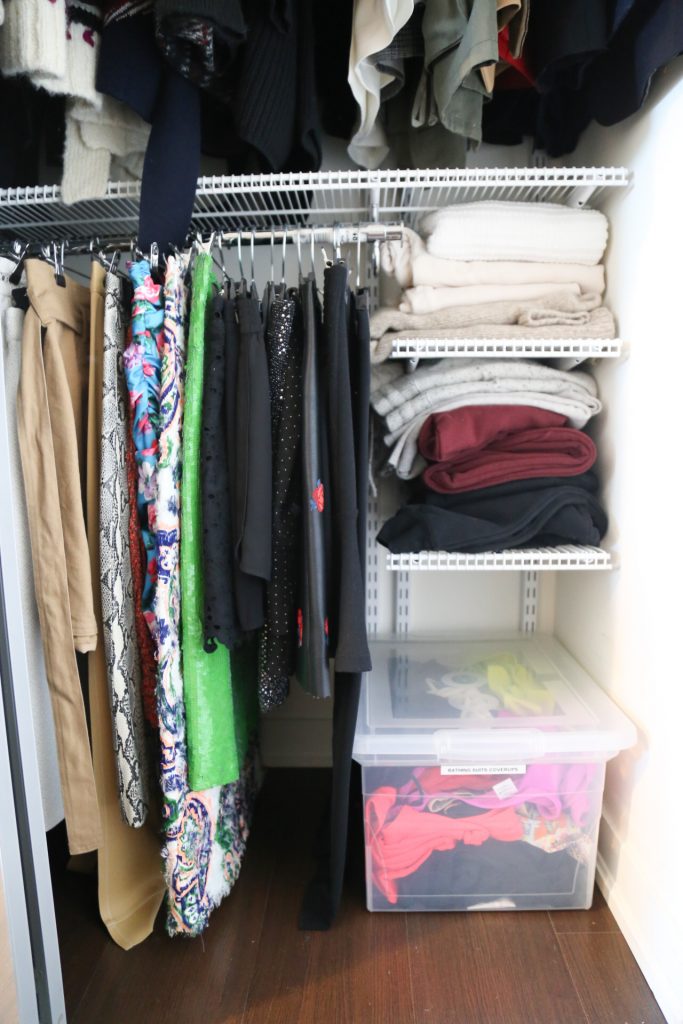
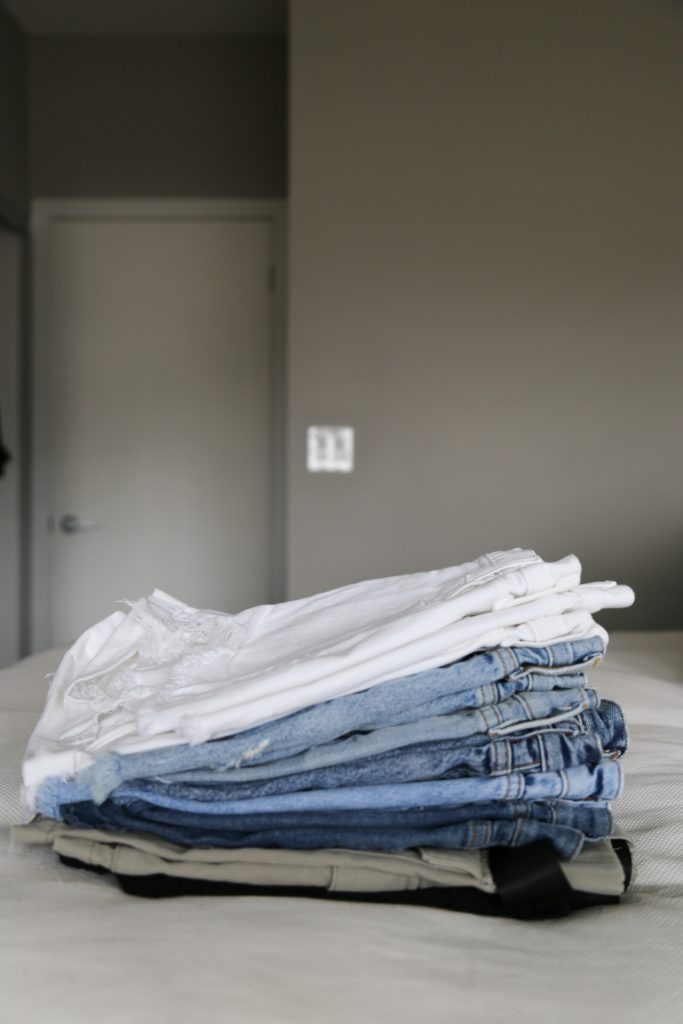
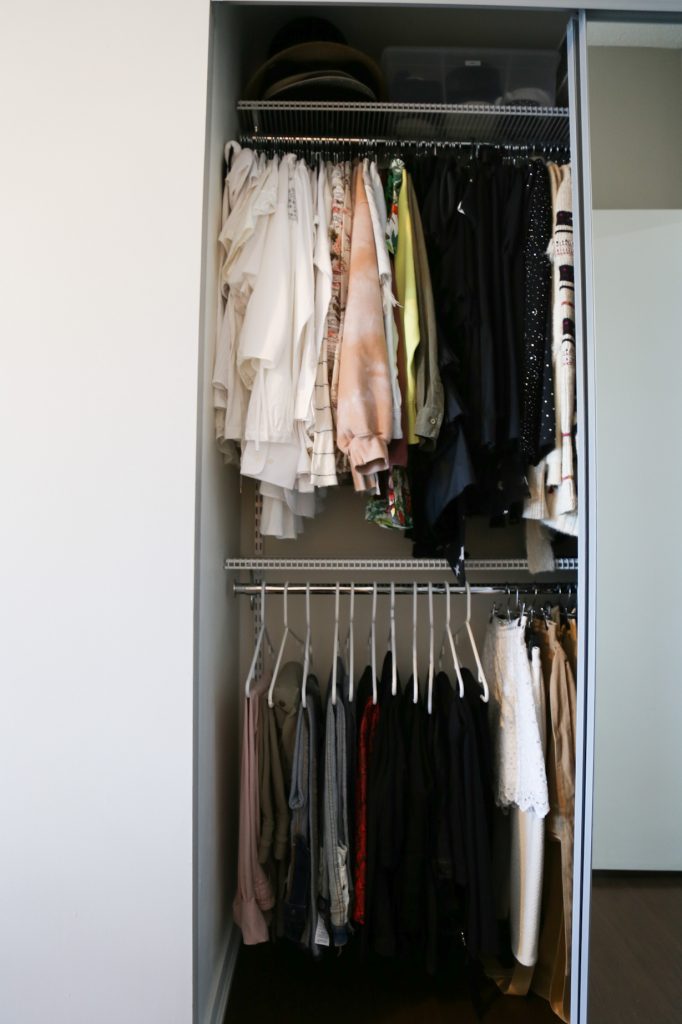
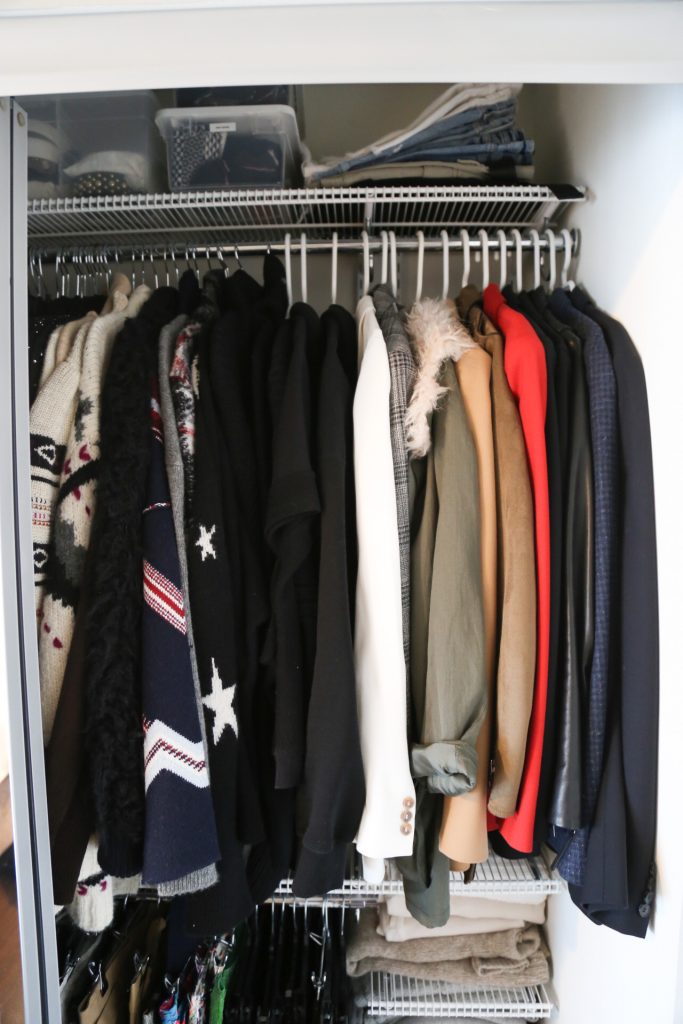
Long Hang:
In my other closet, I store all my long hang dress pants and dresses. And you’ll see a theme here – once again – it’s lightest to darkest, sleeveless to long sleeve. And at the far end, I put all of my long dresses and jumpsuits, followed by my special pieces that are in garment bags to protect them.
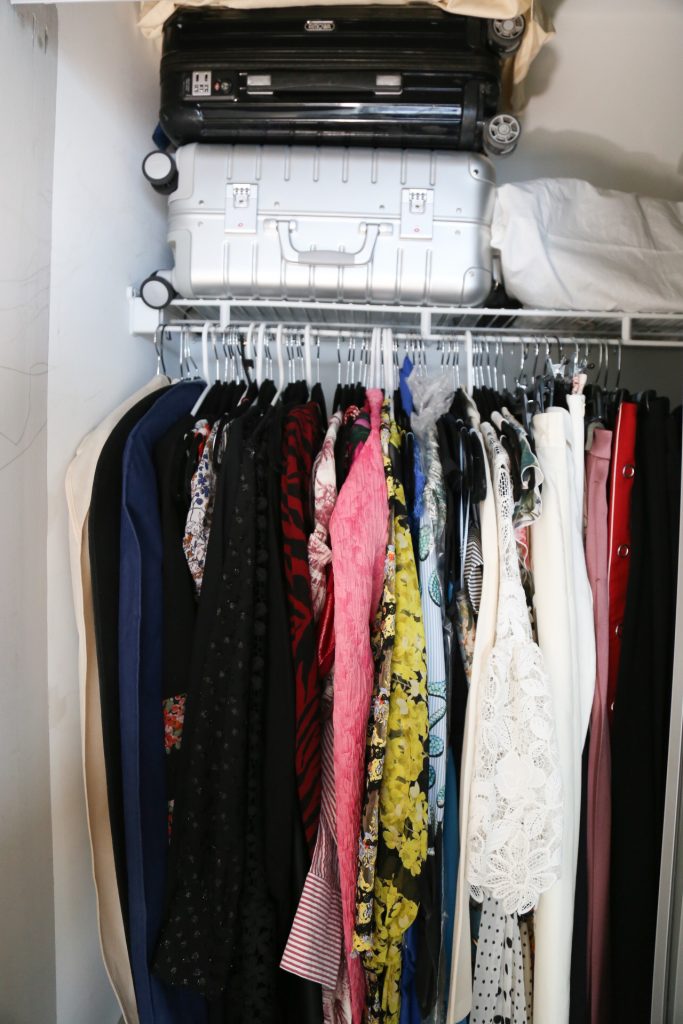
Above my dresses, I store all of my travel necessities: carry-ons, weekender bags, and other travel bags.
On the opposite side, I store my packing cubes, vacuum seal bags, totes, garment bags and reusable bags in one large clear bin to keep things organized and clean.
Footwear:
On the other side of my long hanging garments, I made myself a shoe rack. I purchased several shoe racks from Ikea and screwed them all together to create a multi-stacked functional rack.
I also put two together in my front hall as well (not pictured) for my everyday footwear: boots and sneakers mostly.
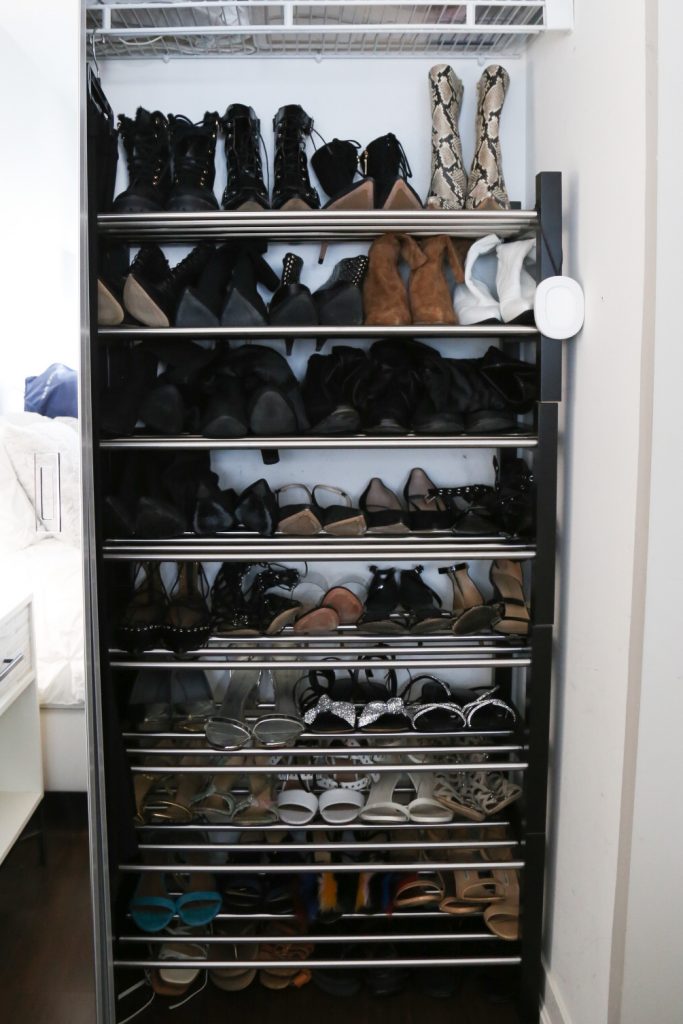
I hope this has helped inspire you to do a thorough clean up of your closets at home! Spring is a perfect time to get rid of the old and create more space in your home.
And remember: if you haven’t worn something in quite some time (I’m talking 2 years or more – with the exception of special occasion items), if it no longer fits, or has a rip or stain that cannot be fixed, it’s time to move on.
I like to create three piles: Donate, Consign and Discard. There are so many charities in need of clothing – and consigning not only puts money in your pocket, it’s also helping create a more sustainable future.
Stay safe out there fashion friends!
